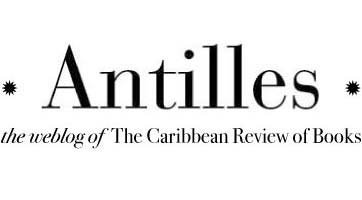2008 CRB books of the year
Where, dear readers, did this whole gallumphing year go? Does our perception of time change as we get older, so that the days and weeks and months speed faster and faster downslope--or is that apparent acceleration unique to your humble Antilles blogger?
It doesn't seem so very long since I posted the CRB's list of 2007's most noteworthy books, but indeed it was exactly one year ago. Now it's time again to rack the collective editorial brain, and decide which of 2008's new books we wish to commend to our readers.
This past year, in our four quarterly issues, the CRB reviewed exactly fifty books, and "noticed" thirty-five in our "Also noted" column. (That's a few less than in 2007. We actually published more pages in 2008, but we also devoted a greater proportion of them to visual arts and film, and to new poems, stories, and essays. Maybe the reviews have also been getting a bit longer.) Our longish lead-time means that many books from the latter part of 2008 won't actually be reviewed in our pages till next year.
And of all these books that have passed over our desks and through our hands, which do the CRB's editors believe should find, as we put it a year ago, a permanent place in our readers' bookshelves? Once again, we have chosen only books that ought to interest general readers across the Caribbean, excluding specialist scholarly titles. There are ten books on our list: two novels, two books of poems, two anthologies, a biography, a memoir, an illustrated volume of art history, and one book that is hard to categorise. In alphabetical order, the 2008 CRB books of the year:
After-Image, by Dennis Scott, ed. Mervyn Morris (Peepal Tree Press)
A posthumous selection of poems by the much-missed Jamaican writer, published seventeen years after his death. Dating mostly from the last years of his life, these poems seem to foreshadow Scott's untimely departure; they also reintroduce an important forbear to today's emerging writers. (Reviewed by F.S.J. Ledgister in the November 2008 CRB.)
Cuba: Art and History from 1868 to Today, ed. Nathalie Bondil (Montreal Museum of Fine Arts)
This massive catalogue of an exhibition that ran at the MMFA looks at the development of art in modern Cuba against the background of the country's tempestuous history over the last century and a half--reproducing works from the national collections alongside documentary photographs, commercial art, and political propaganda. (Reviewed by Nicholas Laughlin in the August 2008 CRB.)
Horses in Her Hair: A Granddaughter's Story, by Rachel Manley (Key Porter Books)
Manley's third family memoir tells the story of her grandmother Edna Manley--wife of Jamaica's first premier and mother of the country's fifth prime minister, but also a cultural icon in her own right. Gently, honestly, eloquently, Manley offers a lingering assessment of a woman who was a legend in her own time. (Look out for a review in the February 2009 CRB.)
Jamaican Food: History, Biology, Culture, by B.W. Higman (University of the West Indies Press)
At once a cultural history, an anthropological study, and an encyclopedia of flora and fauna--fish, flesh, and fowl--Higman's comprehensive survey of "food practices" in Jamaica, from the time of the pre-Columbian Taino to the present, is a surprisingly entertaining miscellany of historical references, statistics, recipes, and anecdotes. (Reviewed by Anu Lakhan in the November 2008 CRB.)
Our Caribbean: A Gathering of Gay and Lesbian Writing from the Antilles, ed. Thomas Glave (Duke University Press)
A landmark anthology of fiction, poems, essays, and memoirs by thirty-seven writers, confronting head-on one of the contemporary Caribbean's areas of darkness. Whether telling tender love stories or declaiming fierce polemics, these voices insist that gay and lesbian writers (and readers) have a central place in the Caribbean literary tradition. (Reviewed by Kelly Baker Josephs in the November 2008 CRB.)
Pynter Bender, by Jacob Ross (Fourth Estate)
This epic first novel by Grenadian Jacob Ross--also author of two short story collections--tells the strange and densely lyrical story of the title character's childhood and adolescence in an unnamed island shadowed by a sinister dictator. Pynter's growth into troubled consciousness and his movement from his rural home village to the confusions of urban life mirror his island's social evolution. (Look out for a review in the February 2009 CRB.)
The Same Earth, by Kei Miller (Weidenfeld and Nicholson)
The first novel by one of the most accomplished Caribbean writers of his generation shows the development of the gifts Miller displayed in his previous books of poems and short fiction: narrative energy, wry humour, and a knowingness about the world as tender as it is unsparing. (Reviewed by Lisa Allen-Agostini in the November 2008 CRB.)
Selected Poems, by Ian McDonald, ed. Edward Baugh (Macmillan Caribbean)
This career-summing volume by an eminent Caribbean man of letters assembles poems written in six decades. McDonald's poems are scrupulously attentive to the world and its joys and pains; only rarely does lyrical talent so closely coincide with generosity of spirit. (Look out for a review in the February 2009 CRB.)
Trinidad Noir, ed. Lisa Allen-Agostini and Jeanne Mason (Akashic)
This bold anthology of short fiction by both celebrated writers and new unknowns stares unblinking into the dark corners and alleyways of the contemporary Caribbean, and reminds us that--despite the brightly coloured stereotypes--these islands have always been home to violence and brutality and things we'd rather forget. (Look out for a review in the May 2009 CRB.)
The World Is What It Is: The Authorised Biography of V.S. Naipaul, by Patrick French (Picador/Knopf)
The literary sensation of the year, French's biography of the Caribbean's most polarising writer--the man we love to hate and hate to love--is a gripping and ultimately moving study of a literary intelligence prepared to destroy everything in its path in its quest to understand the world. (Reviewed by Jeremy Taylor in the November 2008 CRB.)



